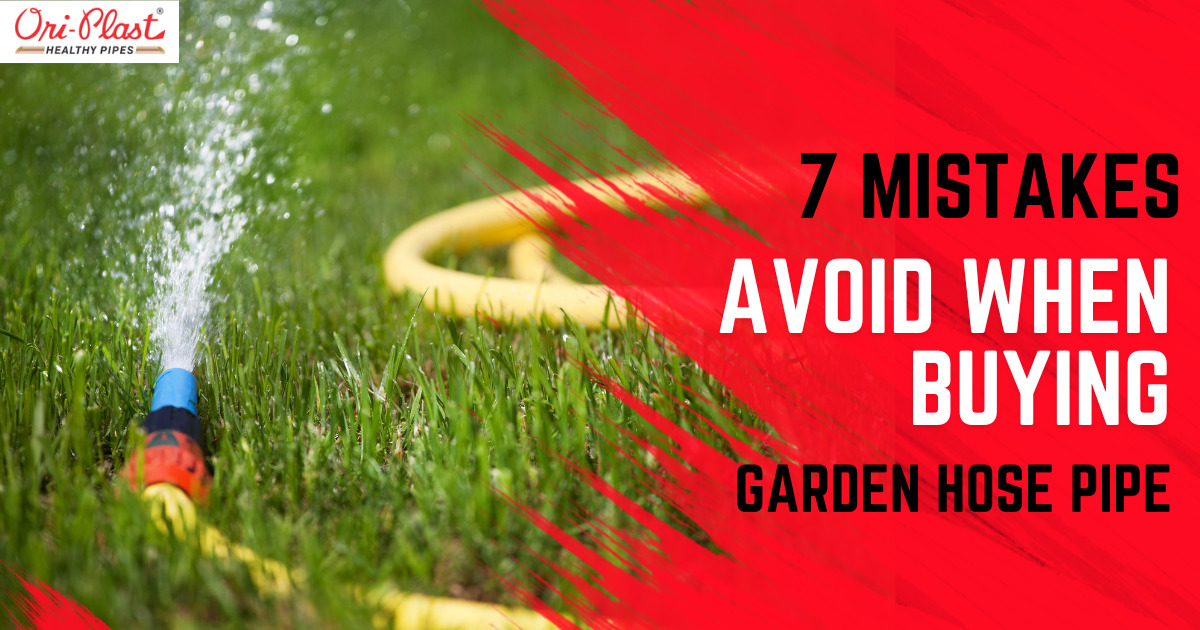A garden hose pipe may seem like a straightforward purchase, but making the wrong choice can lead to frustration, wasted money, and even damage to your garden. To ensure you select the best garden hose pipe for your needs, it's important to avoid these seven common mistakes.
Mistakes To Avoid Before Buying Garden House Pipe
1. Neglecting Material Quality
One of the most significant factors to consider when buying a garden hose pipe is the material from which it's made. Garden hoses are typically constructed from three primary materials: vinyl, rubber, and reinforced hoses. Vinyl hoses are the most affordable but are prone to kinking and cracking. Rubber hoses are more durable but can be heavy and expensive. Reinforced hoses, often made of a combination of materials, strike a balance between durability and affordability. Invest in a quality hose made from durable materials to avoid premature wear and tear.
2. Ignoring Hose Length
Buying a garden hose that is too short can limit your mobility and reach, making it difficult to water all areas of your garden. Conversely, purchasing a hose that is excessively long can be unwieldy and challenging to store. Measure the distance from your water source to the farthest point in your garden to determine the ideal hose length. Consider getting a longer hose with the ability to be cut to size if needed.
3. Overlooking Hose Diameter
Hose diameter plays a crucial role in water flow and pressure. A larger diameter hose will deliver more water in less time, which is ideal for larger gardens or for tasks that require high water pressure, such as washing your car. However, a larger diameter hose can be heavier and harder to handle. Choose a hose diameter that matches your garden's size and your intended use.
4. Not Checking for Kink Resistance
Kinks in your garden hose can be incredibly frustrating and can lead to premature wear and damage. Look for hoses labeled as "kink-resistant" or "no-kink" to minimize this issue. Additionally, hoses with a spiral construction tend to be more kink-resistant than straight hoses.
5. Forgetting About Hose Fittings
Hose fittings are another critical aspect to consider. The two most common types of hose fittings are plastic and brass. Brass fittings are more durable and less likely to corrode, making them a better long-term investment. Additionally, consider purchasing hoses with quick-connect fittings for hassle-free attachment and detachment of accessories.
6. Ignoring UV Resistance
If your garden hose will be exposed to the sun for extended periods, UV resistance is crucial. UV rays can cause hoses to deteriorate, become brittle, and lose flexibility over time. Look for hoses with UV-resistant coatings or choose a hose reel or storage solution that shields the hose from direct sunlight.
7. Not Considering Hose Storage
Proper storage can greatly extend the lifespan of your garden hose. Leaving it exposed to the elements or tangled on the ground can lead to damage and kinking. Invest in a hose reel, wall-mounted hanger, or hose pot to keep your hose neatly stored and protected when not in use.
In conclusion,
Buying a garden hose pipe may seem like a simple task, but it's essential to consider these factors to make the right choice for your specific needs. By avoiding these common mistakes and investing in a quality hose that suits your garden and watering requirements, you'll ensure years of trouble-free watering and gardening enjoyment. Remember that a well-chosen garden hose pipe is an investment in the health and beauty of your outdoor space.


